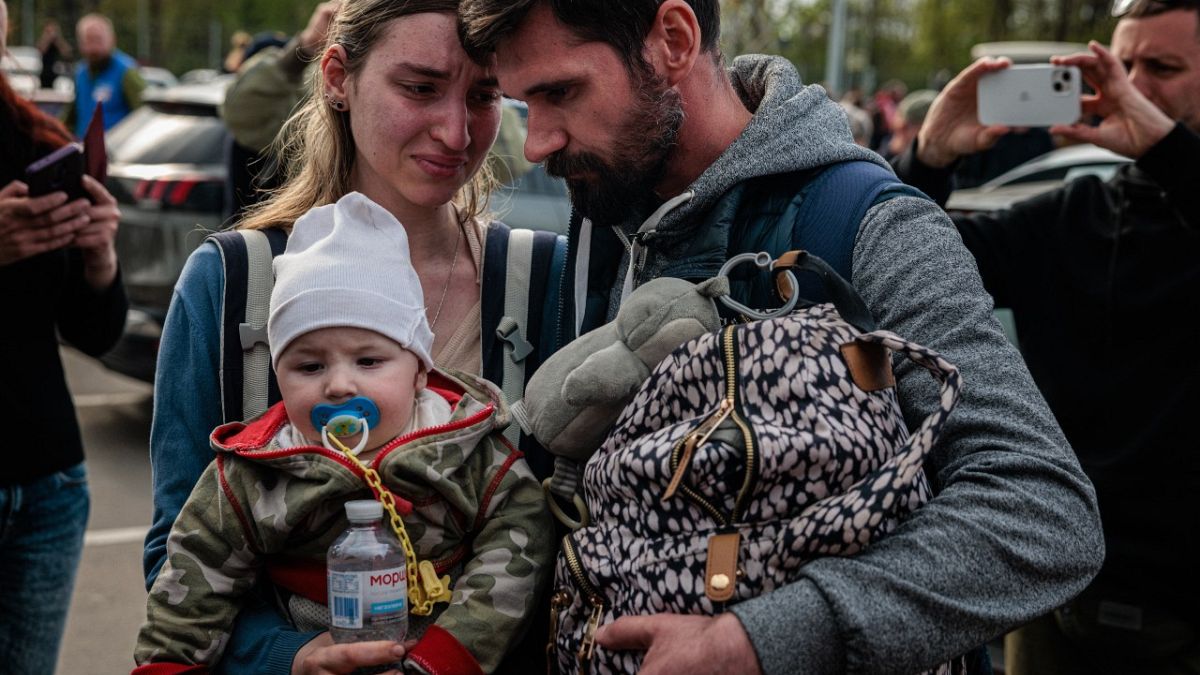Civilians taken to Ukrainian-controlled Zaporizhzhia have been telling of life in the bunkers of a large Mariupol steel works as it came under Russian assault.
Scores of civilians evacuated from a bombed-out steel plant in Mariupol have been telling of days and nights filled with dread and despair from constant shelling, after reaching relative safety in Ukrainian-controlled territory.
President Zelenskyy confirmed late on Tuesday that 156 civilians evacuated from the city had arrived in Zaporizhzhia, a Ukrainian-controlled town 230 kilometres to the northwest.
One evacuee said she went to sleep at the plant every night afraid she wouldn’t wake up.
“You can’t imagine how scary it is when you sit in the bomb shelter, in a damp and wet basement, and it is bouncing and shaking,” 54-year-old Elina Tsybulchenko said upon arriving in Zaporizhzhia in a convoy of buses and ambulances.
She said if the shelter were hit by a bomb like the ones that left the huge craters she saw on the two occasions she ventured outside, “all of us would be done”.
Evacuees, a few of whom were in tears, made their way from the buses into a tent offering some of the comforts long denied them during their weeks underground, including hot food, diapers and connections to the outside world.
Mothers fed small children. Some of the evacuees browsed racks of donated clothing, including new underwear.
"We are so grateful to all those who have helped us. There was a time when we had lost hope, we thought everyone had forgotten us," said another of the evacuees, Anna Zaitseva, holding her six-month-old baby, Svyatoslav.
Osnat Lubrani, the UN humanitarian coordinator for Ukraine, said that thanks to the evacuation effort over the weekend, more than 100 people — including women, the elderly, and 17 children, the youngest six months old — were able to emerge from the bunkers under the Azovstal steelworks and “see the daylight after two months”.
She added that about 30 people who came out of the plant chose not to leave Mariupol, saying they were “horrified” at its total devastation and first wanted to find out if their loved ones were still alive.
Ukrainian commanders said that on Tuesday Russian forces backed by tanks began storming the sprawling plant, which includes a maze of tunnels and bunkers spread out over 11 square kilometres.
It was unclear how many Ukrainian fighters were still inside, but the Russians put the number at about 2,000 in recent weeks, and 500 were reported to be wounded.
A commander from Ukraine's Azov Regiment called for urgent help to evacuate the civilians still inside the plant and bring them to safety.
UN Secretary-General Antonio Guterres called for a further respite from the fighting along the lines of the one agreed between Ukraine and Russia in recent days to allow civilians to leave the Azovstal plant.
A convoy of buses left Mariupol on Wednesday in a new attempt by Ukraine, the UN and the International Committee of the Red Cross (ICRC) to evacuate civilians from Mariupol, the regional governor said.
